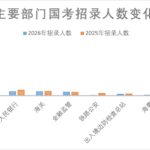China’s automotive industry is now entering an era of “new modernization,” characterized by ADAS, autonomous driving, connectivity, electrification, and shared services. According to IHS Markit, the total automotive electronics market is projected to reach $180 billion by 2023, with the average vehicle using semiconductors worth over $500. The highest growth areas are ADAS, powertrain, and infotainment, with ADAS leading at a growth rate of 23.6%.
One reason for the rapid growth of ADAS is automakers’ efforts to enhance vehicle safety by continuously developing new technologies to reduce traffic accidents and ensure secure in-vehicle connectivity. Over the past few years, ADAS active safety systems have made significant advancements due to technologies such as high-precision electronic sensors (lidars, radars, and cameras), high-speed multi-core system-on-chip (SoC) solutions supporting AI, and high-speed in-vehicle networks.
Additionally, transportation regulators worldwide, including China, have raised safety assessment standards in their regulations, mandating compliance for all vehicles. This clearly indicates China’s increasing emphasis on ADAS active safety features.
This “qualitative leap” is driven by advanced hardware and software processing capabilities, accelerating fail-safe engineering design to become one of the most critical standards in the automotive industry today. Automotive semiconductor suppliers like Microchip provide numerous MCUs (microcontroller units) and in-vehicle networking solutions to meet ISO-26262 functional safety standards. The adoption of lidar and surround-view cameras in two market segments reflects this trend.
Making Lidar’s “Heartbeat” More Reliable
With the continuous advancement of intelligence and the demand for 360-degree blind-spot monitoring in autonomous driving, the number of sensors in vehicles is increasing. According to Yole Developpement, sensors for self-driving cars will grow rapidly at a 51% CAGR over the next 15 years. Currently, three main types of sensors dominate autonomous driving development: visual cameras, millimeter-wave radar, and lidar. Each technology has unique advantages and is difficult to replace.
Reliability has long been a priority for automakers and electronic system suppliers. Compared to millimeter-wave radar and cameras, lidar offers high resolution, long-range detection, and a wide field of view, even effectively identifying non-metallic objects like road debris. This makes it essential for autonomous driving, especially for high-level L3-L5 systems. For lidar, which relies on precise timing, MEMS oscillators provide a more reliable “heartbeat.”
Compared to traditional quartz oscillators, MEMS oscillators improve performance by 5x, reliability by 20x, and shock resistance by 500x. Another key advantage is their ability to maintain frequency stability at extremely high temperatures. Additionally, MEMS oscillators are compact and durable.
Microchip’s recently launched DSA11x1 and DSA11x5 are automotive-grade MEMS oscillators and clock generators compliant with AEC-Q100. They offer excellent frequency stability (as low as ±20 PPM) across a temperature range of -40°C to 125°C, meeting Grade 1 automotive electronic requirements.
These MEMS oscillators feature phase jitter below 1 ps (typical), operate at frequencies from 2.3 MHz to 170 MHz, and come in three industry-standard sizes: 2.5 mm × 2.0 mm, 3.2 mm × 2.5 mm, and 5.0 mm × 3.2 mm, with a thickness of 0.85 mm.
The industry’s first dual-output MEMS oscillator, the DSA2311, is one of the new AEC-Q100 Grade 1 compliant oscillators. Packaged in a 2.5 mm × 2.0 mm form factor, it replaces two crystal oscillators on a PCB. With two synchronized CMOS outputs ranging from 2.3 MHz to 170 MHz, it saves PCB space, reduces procurement and inventory costs, and enhances product integration.
The Future of Vehicle Connectivity
Surround-view camera systems are a key component in many ADAS applications, including lane departure warning, parking assistance, blind-spot monitoring, pedestrian detection, and adaptive cruise control. These systems provide a bird’s-eye view of the vehicle’s surroundings, enhancing passenger safety and enabling autonomous driving.
High-speed connectivity is critical for effective surround-view camera systems. Microchip offers automotive Ethernet and INICnet™ controllers for transmitting video, data, and messages across various media.



